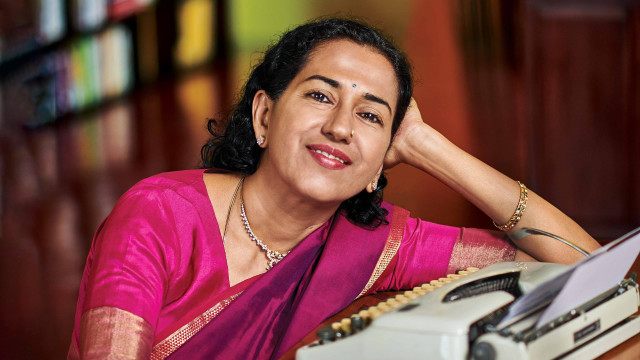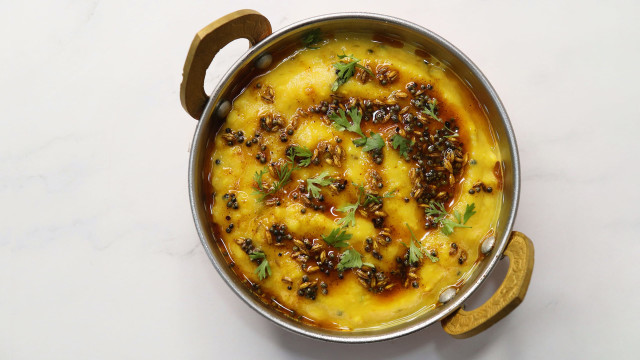Rice is Life

As a little girl I loved the time I spent with my father before I went to sleep. I would lie in the dark, my eyes wide open, staring at the slow swoosh of the ceiling fan as it fought a losing battle against the clammy heat of Madras. And Appa would tell me stories.
One night I asked him why I wasn’t named Meenakshi, after the goddess with beautiful fish-shaped eyes. My sister, older than me by a decade, was named Meenakshi, and her sparkling eyes added to the reasons I was jealous of her.
Appa laughed. In many Tamil families, children are named after their grandparents, but these names are often used only during formal ceremonies and rituals. Our regular names went into our birth and death certificates, school records, and passports. As the firstborn, my sister was named after my father’s mother. I felt I was right to be upset.
“Well, as the youngest you are named after your mother’s mother, and that’s equally special,” Appa said.
“What’s that?” I asked.
“Your name is Annapurni, the mother goddess of food, of holistic creation itself ,” Appa explained. Then, he told me her story.
Once in the city of Varanasi, the god Shiva told the mother goddess that life on Earth was an illusion and meaningless.
“Even food?” she asked.
“Everything,” he said dismissively.
To teach her consort a lesson, the goddess cast a spell over Earth. The land was parched. Drought and famine broke out; plants, animals and humans cried of hunger and thirst. Earth’s creatures prayed to Shiva for food. He realized that he had been wrong to dismiss Earth’s diverse forms of life, and the food that sustained them. On behalf of all living beings, he went to the mother goddess and begged for food. She appeared in her avatar as Annapurni, the goddess of sustenance, and ladled annam, or rice, from a golden pot into Shiva’s begging bowl. Doing so, she nourished Earth back to life.
Annam Brahma
The Sanskrit invocation “Annam Brahma,” often quoted in casual conversation, signifies that food is creation itself.
Patting me to sleep, Appa would add, “To be a connoisseur of life, one must be a connoisseur of food.”
It was a line my father would often repeat, especially after a good meal. He was a fastidious cook and a lover of good food. But I didn’t know what to make of that story then, for he did not give me the crucial information: did the goddess Annapurni have beautiful eyes, or not?
Forty years later, I found myself in Varanasi, one of the oldest cities in the world, on a smoggy winter morning. I stood before the shrine of the goddess at the Mata Annapurna Mandir. Devotees shoved and pushed and thrust their palms out to the priest for the blessed prasad. Every day, the priests cook this symbolic offering of ghee-laced rice and share spoonfuls of it with visiting devotees. Presiding over the distribution of this bounty was Annapurni. The deity was draped in a gold sari, and she held a golden pot and ladle. And her eyes glowed in the jewel lights of the lamps in the shrine.
At noon, the Mata Annapurna temple offers anna daan or free meals to pilgrims and the poor. In temples across the country, a staggering variety of dishes are offered as blessed food, and most contain rice in some form. In the temples of eastern and northern India, the sacred offering is often called bhog, which consists of steamed rice, cooked with lentils and vegetables, seasoned with salt, cumin and black pepper and dollops of ghee. This is sacred food, considered healing and nourishing.
In one of Varanasi’s labyrinthine lanes stands a kitschy temple to Khichdi Baba or the Guru of Rice Porridge. Every day, a fourth-generation member of the family attached to this temple cooks large portions of khichdi on the street and serves it to the homeless and hungry people who gather here for a meal. Both bhog and khichdi refer to rice and lentils cooked together, but the latter typically refers to the domestic version of ceremonial bhog across north and northeast India.
In south India, pongal is a breakfast dish of rice and lentils, tempered with curry leaves, cumin and peppercorns, while chakkara pongal — rice cooked with jaggery — is the ceremonial version offered in temples and in home shrines. In south Indian temples, a variety of mild rice preparations are symbolically offered to the deity and distributed to worshippers in donne, or small bowls made of banana or lotus leaves.
As a kid, whenever I was taken to visit a temple with the family, I would be preoccupied with guessing which rice dish would be served as the day’s offering. The puliogare or tamarind rice at the Parthasarathy Temple in Chennai and the akkaraadisal or jaggery rice in the Ranganatha temple in Srirangam win hands down in my list of favorites. It’s a habit that continues even today, as I drop all civility to greedily receive the little bowl of blessed rice and to search for a temple’s kitchen. The ritual importance of rice is deeply entwined with the delight I take in its eating.
A decade ago, as my father’s body was readied to be led away for cremation, my sister and I were ushered by the priest to perform the funeral rite of feeding the departed with rice. The symbolic offering of food for the afterlife — that final send-off — is done by the women of the family in many Hindu communities.
As my eyes misted over while we poured fistfuls of rice over Appa’s mouth, my sister murmured, “To be a connoisseur of life is to be a connoisseur of food.”
Key Takeaways
- Food is a metaphor for nourishment.
- Rice is a sacred in many cultures.
- Rice is a symbol for holistic wellbeing.







